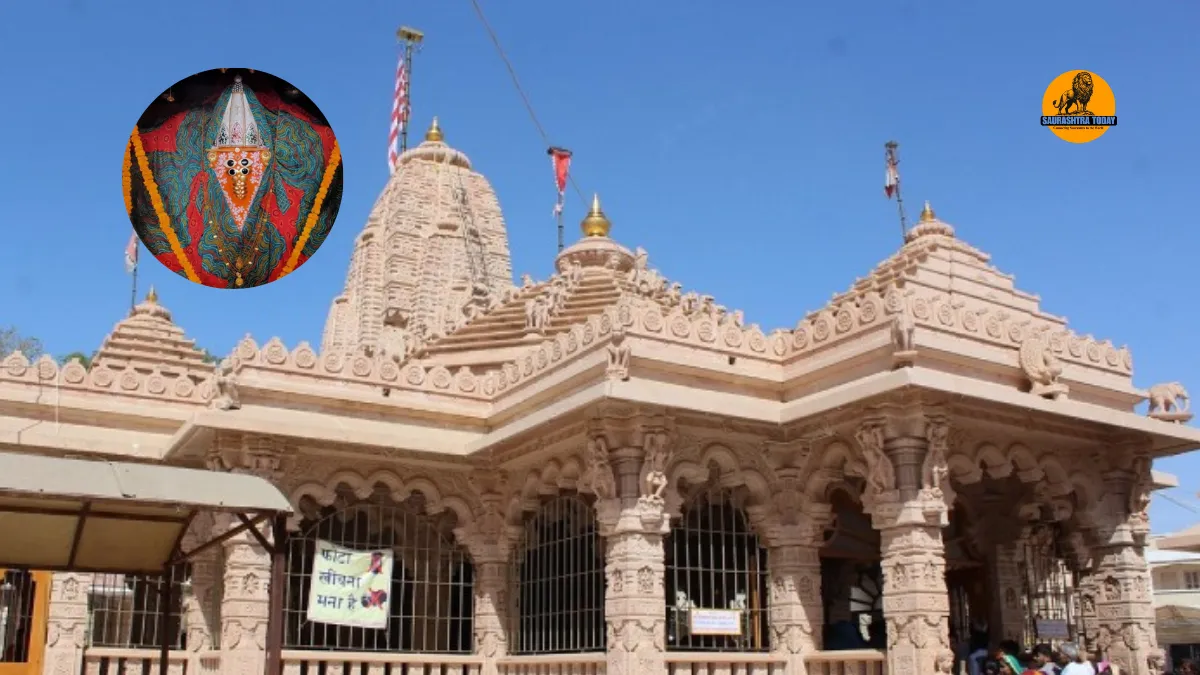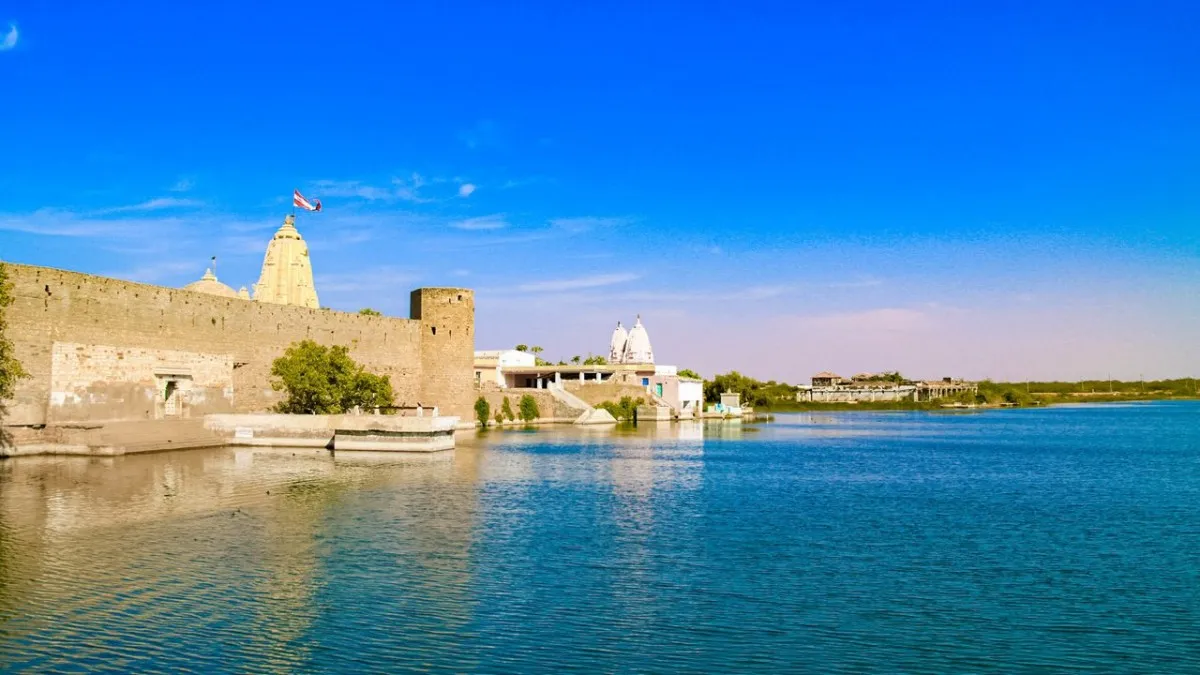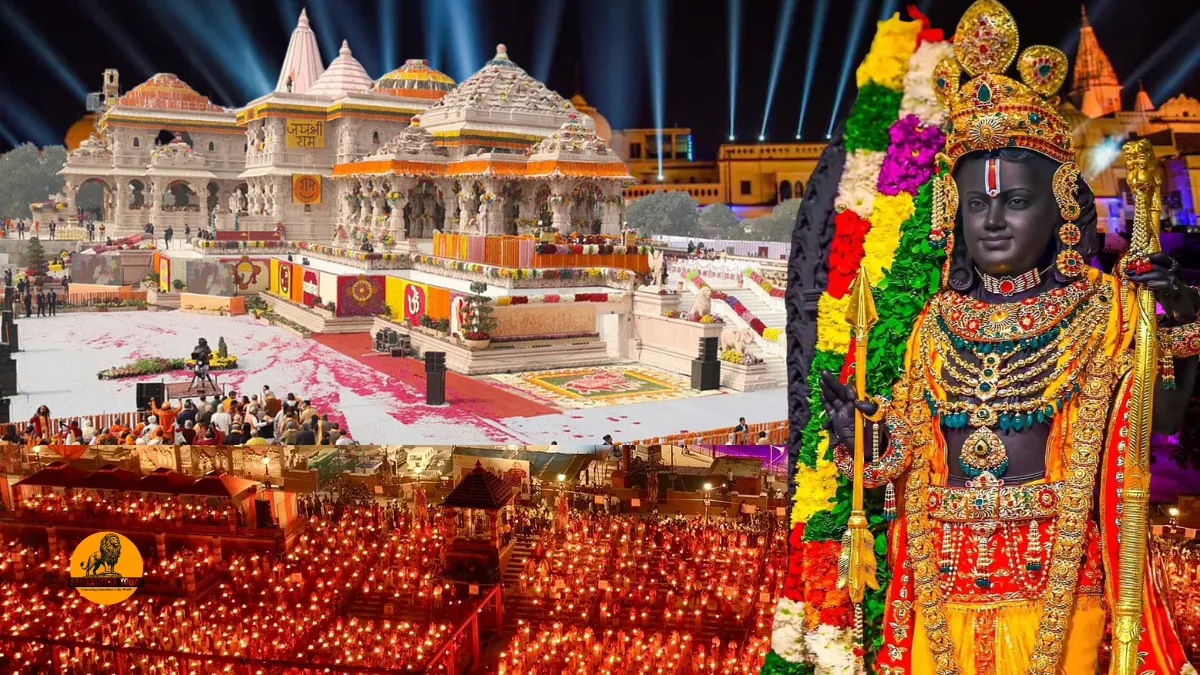Ashapura Mata Madh History: The shrine of Ashapura Mata, famously known as Mata no Madh, is one of the most revered spiritual sites in Kutch, Gujarat. Steeped in centuries of devotion, history, and local culture, this temple is more than a religious destination—it is a symbol of faith, resilience, and the enduring legacy of generations. References to the goddess appear in sacred texts such as the Puranas and Rudrayamal Tantra, all of which point toward her long-standing presence in Kutch. Despite the absence of surviving ancient records pinpointing the exact origins of worship here, oral traditions and inscriptions on marble slabs reveal that Mata no Madh has been a focal point of spiritual life for over a millennium.
Early Historical Context
Historical evidence confirms that the goddess was revered as early as the 9th century AD, when the Samma clan of Rajputs from Sindh first entered north-western Kutch. Over time, additional families from this clan settled in the region, and one of these lineages eventually gained control of the entire Kutch state in the early 16th century under Rao Khengarji I, son of Jam Hamirji. Both Jam Hamirji and Jam Rawal, rulers in Sindh, were ardent devotees of Ma Ashapura, indicating the deity’s deep significance for local rulers as well as the general population.
The shrine’s history reflects a blend of devotion and political alliances, where rulers actively patronized the temple and its rituals. This close connection between the Jadeja rulers and Ashapura Mata helped solidify the temple’s position as a central institution in Kutch’s spiritual and cultural life.
The Legendary Beginning of Ashapura Mata Madh History
According to popular legend, around 1,500 years ago, a trader named Karad Vania from Marwar (present-day Rajasthan) traveled to Kutch to sell his goods. During his journey, he paused at the spot where the temple now stands to observe Navratri, a nine-day festival dedicated to Goddess Amba. Childless and deeply devoted, he prayed for the goddess’s blessings to have a child. One night, the goddess appeared in his dream and instructed him to construct a temple at that exact location.
As proof of her divine presence, he found a coconut and a chundri, a red-colored cloth with tie-and-dye patterns, upon waking. The goddess instructed that the temple doors remain closed for six months to allow her presence to settle within the shrine. However, Devchand, as Karad Vania was also known, could not resist opening the doors early and discovered the goddess in a kneeling posture, attempting to rise—the position she is revered in today. Scholars suggest that a naturally formed rock or early image may have existed prior to the temple, over which Devchand built the structure, fulfilling his prayer for a child.
Architecture and Seismic Resilience
Mata no Madh is located in a seismic zone, prone to both low and high-intensity earthquakes. Over centuries, these tremors damaged the temple at intervals, prompting multiple reconstructions. Marble inscriptions found in the temple indicate these restorations, confirming the shrine’s ancient and enduring presence. The temple’s architecture reflects both historical continuity and adaptations necessitated by the region’s seismic activity.
Beyond the main shrine of Ashapura Mata, the complex hosts temples dedicated to Hinglaj Mata, Chachra Bhawani, Khatla Bhawani, and Jagora Bhawani. Smaller shrines for Lord Shiva and other deities are also present, creating a diverse and inclusive spiritual environment.
The Kapadi Order and Mahant’s Role
The temple is presided over by the Mahant, or Raja, who belongs to the Kapadi order—a celibate monastic tradition thought to originate from the Kapalic sect. The Raja ordains disciples, maintaining the sanctity of rituals, while senior disciples may train their own followers. Historically, Madh housed a large number of Kapadis, highlighting its importance as a center of spiritual learning and devotion.
Festivals and Ceremonial Practices
Special ceremonies are observed during Chaitri Navratri (April/May) and Ashvin Navratri (September/October), with Ashvin Navratri holding greater significance. During these nine days, the Mahant undertakes fasting and performs the Havan ritual at midnight on the seventh day (Saptami). On the following day, Ashtami, the primary puja is conducted by the Maharao or a member of the former royal family of Kutch.
Historically, offerings included buffaloes and goats, and in ancient times, even human sacrifices were reportedly performed. In contemporary practice, these have been replaced with symbolic offerings such as sweet rice or wheat, distributed as prasad to devotees. The rituals are accompanied by music from shennai and local drums, with Jagarias—members of the indigenous community—singing praises of Ashapura Mata and recounting her miracles.
The Jadeja Dynasty and Ashapura Mata
The Samma clan, later known as the Jadejas, were originally worshippers of Goddess Mahamaya (Momay). During their migratory lifestyle, each chieftain carried a portable idol for worship. Upon settling in Kutch, they embraced Ashapura Mata as their guardian deity. The battle cry “Jai Ashapura” became synonymous with devotion and bravery among the Jadeja rulers.
Folklore and bardic poetry depict the regular worship of the Jadeja rulers at Mata no Madh and their respect for the Kapadi order. When Rao Khengarji I established Bhuj as the capital city, he also formalized the yearly Ashvin Navratri celebrations at Mata no Madh. Ceremonial fly-whisks (chamars) made from peacock feathers are carried in processions from Bhuj to the temple, with devotees walking barefoot in reverence. The Maharao performs the main puja, maintaining the centuries-old royal tradition.
Navratri Celebrations at Mata no Madh
The festival of Navratri is celebrated with unparalleled devotion at Mata no Madh, drawing thousands of pilgrims every year. The two main Navratris—Chaitri Navratri in April/May and Ashvin Navratri in September/October—are marked by elaborate rituals, fasting, prayers, and cultural events. Of the two, Ashvin Navratri holds greater significance, mirroring practices observed across India.
During these nine days, the Mahant observes rigorous fasting and performs the Havan ceremony at midnight on the seventh day, Saptami, an unusual but historically significant arrangement that allows the Maharao, representing the royal family of Kutch, to perform the main Ashtami puja without interference. This coordination between the Raja and the Maharao underscores the deep-rooted partnership between the temple administration and the royal household.
Ashtami Puja and Ritual Details
On the Ashtami, the Maharao, or his appointed family member, leads the main puja at the shrine. Prior to the ceremony, ceremonial fly-whisks (chamars) made of finely shredded peacock feathers are carried from Bhuj to Mata no Madh in a grand procession. Devotees, walking barefoot, accompany the chamars with music from shennai and traditional drums, while Jagarias recount the miracles of Ashapura Mata, enhancing the spiritual atmosphere.
Once at the temple, the old chamars are replaced with new ones as the Maharao performs the puja. Local vegetation, known as patri, is placed on the deity’s right shoulder, and the priest, holding a ceremonial cloth (angvashtra or selo), rings bells while chanting prayers. Occasionally, strands of vegetation falling into the cloth are interpreted as divine blessings, reinforcing devotees’ faith in the goddess’s power.
In ancient times, animal sacrifices were performed, though these have now been replaced with offerings of sweet rice and wheat, distributed to the poor as prasad. These rituals exemplify the evolution of spiritual practices while retaining their symbolic essence.
Social and Cultural Significance
Ashapura Mata is revered not only by Hindus but also by Jains, some Muslim families, and other local communities. The temple serves as a cultural hub, fostering harmony and collective participation in religious activities. Pilgrims visit throughout the year, with numbers swelling significantly during Navratri. Estimates suggest that in 1994 alone, around 200,000 to 250,000 devotees visited the shrine, highlighting its enduring popularity.
The temple trusts, including Shri Mata Na Madh Jagir Trust and Shri Ashapura Bhandar & Atithigraha Trust, manage the donations and facilitate the development of the temple complex. Contributions support not only religious activities but also social welfare initiatives such as feeding the needy, maintaining clean facilities, and preserving the historical and cultural heritage of the shrine.
Miracles and Divine Experiences
The faith of devotees is often reinforced by reported miracles and personal experiences at the shrine. Many claim that sincere prayers to Ashapura Mata are answered, whether for health, prosperity, or spiritual guidance. Witnessing the deity in her sanctum leaves many with a profound sense of peace, divine presence, and spiritual fulfillment. Such experiences strengthen the temple’s reputation as a center of divine blessings.
Global Perspective on Female Divinity
The veneration of Ashapura Mata fits into a broader, global understanding of female divinity. Across cultures—from ancient Greece, Egypt, and Rome to Christianity—the maternal and powerful feminine principle is honored. In Christianity, for instance, Mother Mary is revered as a nurturing and protective figure. In India, the worship of goddesses such as Shakti, Lakshmi, and Annapurna embodies the divine feminine, and Ashapura Mata represents this powerful spiritual principle at a local level.
Also read: Discovering Ashapura Mata Madh Kutch: The Sacred Heart of Bhuj
The Enduring Legacy of Ashapura Mata
The temple of Mata no Madh is not only a religious landmark but also a cultural and social institution. Over centuries, it has witnessed the ebb and flow of dynasties, including the Jadeja rulers, and has adapted to changing times while preserving its core spiritual essence. The Kapadi order, the rituals of Navratri, and the participation of devotees across communities have contributed to making Ashapura Mata a symbol of faith, unity, and devotion.
The annual celebrations, rituals, and the temple’s historical narrative provide a living link to the past. By upholding centuries-old traditions and embracing modern practices, Mata no Madh continues to inspire generations, ensuring that the Ashapura Mata Madh History remains a vibrant and integral part of Kutch’s cultural and spiritual heritage.



















